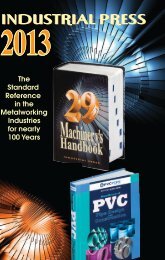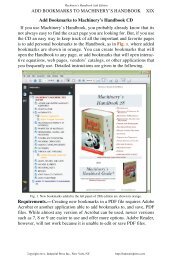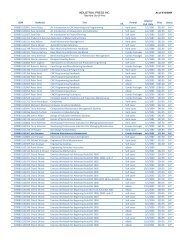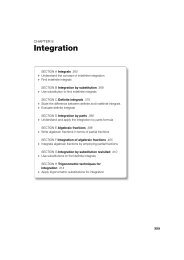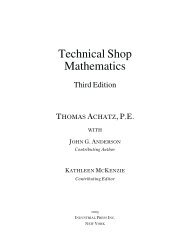computer numerical control programming basics - Industrial Press
computer numerical control programming basics - Industrial Press
computer numerical control programming basics - Industrial Press
You also want an ePaper? Increase the reach of your titles
YUMPU automatically turns print PDFs into web optimized ePapers that Google loves.
CNC MILLING: The Milling <strong>programming</strong> scores were even lower.<br />
Secondary average was 25.8 with a high of 100 and five contestants<br />
with zeros. Post-secondary average was 25.7 with a high of<br />
58 and four contestants with zero.<br />
These scores indicate a definite lack of fundamental CNC<br />
<strong>programming</strong> skills!<br />
All contestants were given a guide to the Fanuc software that<br />
would be used. The Fanuc software guide, that is used in over<br />
80% of the CNC applications throughout the world, included all the<br />
codes needed for the competition. Contestants were given time to<br />
familiarize themselves with and ask questions about the <strong>computer</strong>s<br />
and the software they would be using. Technical committee<br />
members were shocked to find several contestants that did not<br />
even have the basic <strong>computer</strong> skills to open the software program.<br />
It is our recommendation that any school with a Precision Machining<br />
curriculum should be utilizing manual machines to provide a<br />
basic understanding of and to develop basic skills related to the<br />
fundamental machining processes. The focus of this phase should<br />
be work-holding techniques, how metal is removed, tooling terminology,<br />
proper speeds, feed and depth of cut for different materials<br />
and obtaining geometric and size tolerances. After this basic<br />
introduction to machining processes (utilizing manual machines)<br />
instruction should quickly transition to CNC <strong>programming</strong> utilizing<br />
and applying all the fundamental machining skills learned in the<br />
manual-machining phase.<br />
We are not suggesting that every school with a metalworking<br />
program invest in costly full-sized CNC machines; just the opposite<br />
is true. Inexpensive text books, trade literature, video tapes,<br />
machine simulators (this is how the small bench-top CNC teaching<br />
machines should be looked upon), and <strong>computer</strong> software is<br />
available today. We also feel that the NIMS (National Institute for<br />
Metalworking Skills) Machining, level I and II skill standards<br />
should be incorporated into every school’s machining program.<br />
2



